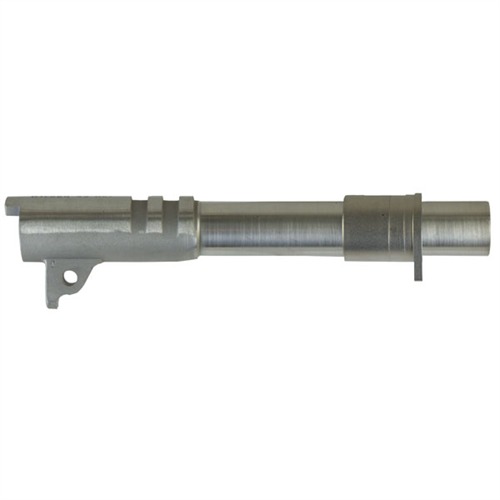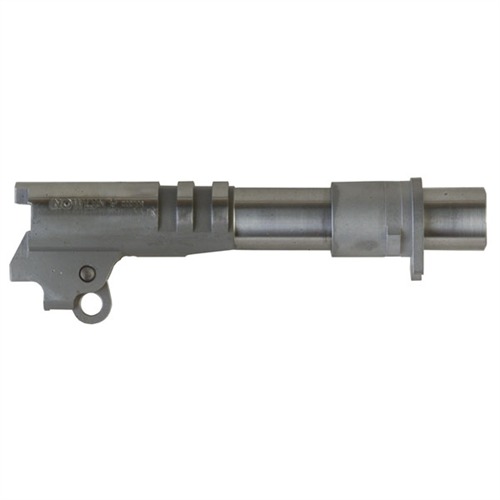
I was at the http://www.stormlakebarrel.com/barrels website (they supply Springfield with barrels for their upper end pistols) and noticed the three options on their aftermarket 1911 barrels.
1. Para / Clark
2. Wilson / Nowlin
3. None
I assume the "3. None" option is what the original GOVT GI models use. The other options seem to be for the expensive custom guns. Are the barrels for those guns in any way "unsupported" for the .45 ACP case such that bulges sometimes occur with high pressure rounds?
Terminology? I know what the ramp is, the chamber is, and I think the throat is the area between the rifling and the chamber. What do you call the part of the barrel between the chamber and the ramp on the frame that has a slight angle on it somewhat matching the angle of the ramp that leads to it?
The area you refer to is the barrel ramp, that [almost] lines up with the frame ramp.
The other two options essentially have the two ramps in one - on the barrel. The main difference between the two ramped formats is with the profile of the part of the barrel that contacts the Vertical Impact Surface (VIS) on the frame. The Wilson/Nowlin is flat, the Clark/Para is curved. They both have their fans.
However, note that there are plenty of high-end 1911 makers that use barrels in the traditional 'two ramp' format. The barrel ramp is profiled differently from the old days, to make sure the gun will feed hollowpoints reliably, but othewise, they're as JMB intended.
A "ramped barrel" simply incorporates the frame ramp of a standard 1911- pattern pistol as part of the barrel. Compare the upper, "standard" barrel with the lower, "ramped" barrel:


Integrating the "frame" ramp with the barrel allows more support for the case. The different configurations are due to the different shapes of the integral ramp, where the integral ramp fits into the frame; the integral ramp replaces the ramp normally found in the frame. The frame must be milled out to accomodate the barrel's integral rampj. Two different "standards" have emerged as to the shape of the barrel's integral ramp and the aperture milled into the frame to accept it, your numbers (1) and (2).
Normally the .45 ACP does not suffer from case support issues, unless, of course, someone has butchered a barrel's throat with a Dremel. The ramped barrels came into vogue with the high pressure 9mm cartridges developed to reach "major power factor" in "practical" competition. Why a 9mm was desirable is another story. The integral ramp barrel was first seen, I believe, on the FN (Browning) M1935, "High Power."
For the record, the second picture in Walt's post shows a Wilson/Nowlin - style ramped barrel.
Quote:
...I think the throat is the area between the rifling and the chamber.
That area is also referred to as the "leade".
Then, to add to the terminology confusion, the area at the aft end of the chamber is also sometimes referred as the throat when it's enlarged on the sides to better accomodate SWC's - as in "This barrel is throated for wadcutters." But this is actually done on the chamber's "face".
Awful, ain't it?